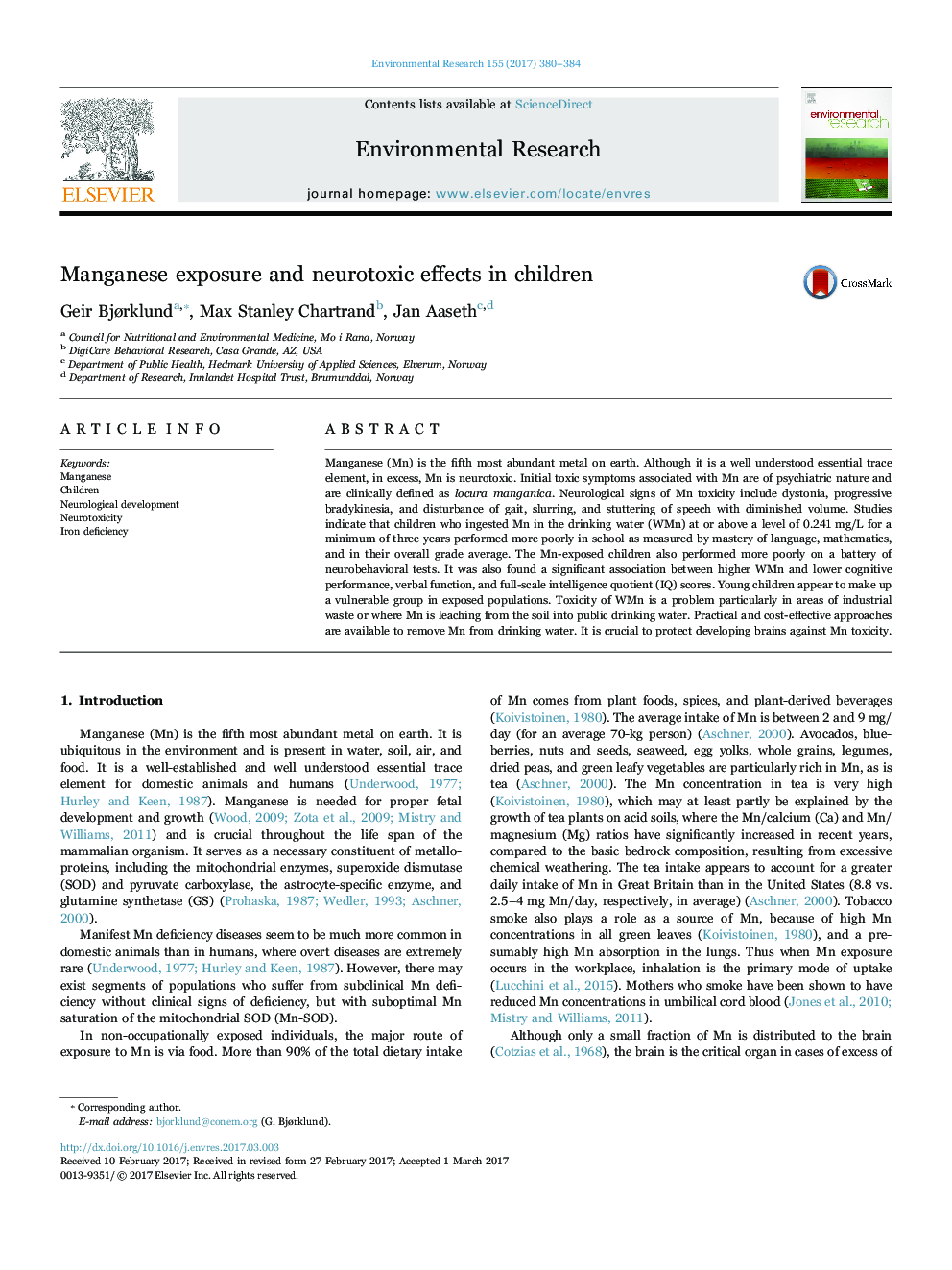| Article ID | Journal | Published Year | Pages | File Type |
|---|---|---|---|---|
| 5756222 | Environmental Research | 2017 | 5 Pages |
Abstract
Manganese (Mn) is the fifth most abundant metal on earth. Although it is a well understood essential trace element, in excess, Mn is neurotoxic. Initial toxic symptoms associated with Mn are of psychiatric nature and are clinically defined as locura manganica. Neurological signs of Mn toxicity include dystonia, progressive bradykinesia, and disturbance of gait, slurring, and stuttering of speech with diminished volume. Studies indicate that children who ingested Mn in the drinking water (WMn) at or above a level of 0.241Â mg/L for a minimum of three years performed more poorly in school as measured by mastery of language, mathematics, and in their overall grade average. The Mn-exposed children also performed more poorly on a battery of neurobehavioral tests. It was also found a significant association between higher WMn and lower cognitive performance, verbal function, and full-scale intelligence quotient (IQ) scores. Young children appear to make up a vulnerable group in exposed populations. Toxicity of WMn is a problem particularly in areas of industrial waste or where Mn is leaching from the soil into public drinking water. Practical and cost-effective approaches are available to remove Mn from drinking water. It is crucial to protect developing brains against Mn toxicity.
Related Topics
Life Sciences
Environmental Science
Health, Toxicology and Mutagenesis
Authors
Geir Bjørklund, Max Stanley Chartrand, Jan Aaseth,
